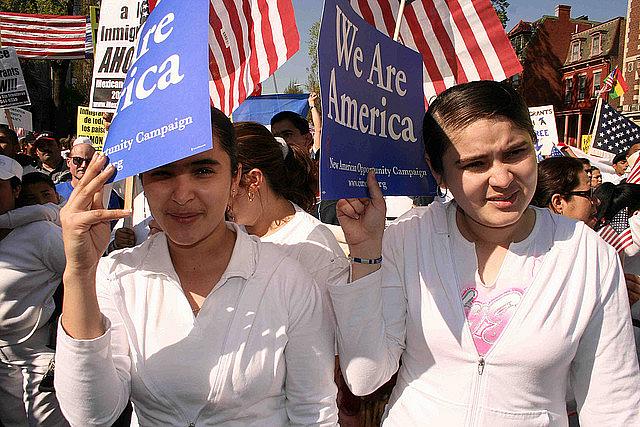New immigration rules in Calif. could reduce uninsured by up to half a million

For many undocumented residents of California, health care is an intractable problem. Employer-based coverage is rare. Private insurance is too expensive for most. Based on income, many undocumented residents would qualify for state or federal health care programs, but without legal papers, they are ineligible. That leaves the public health clinics, which struggle to meet a need that is often compounded by language barriers and untreated chronic illness.
In California, relief for some undocumented residents may be on its way. A recent policy report from the UC Berkeley Center for Labor Research and Education and the UCLA Center for Health Policy Research suggested that as many as 500,000 people may be newly eligible for Medi-Cal, the state’s Medicaid insurance program for low income residents.
The beacon of light comes courtesy of changes in immigration law over the past few years. In June 2012, the federal government announced deportation relief and work eligibility for children who arrived in the United States before the age of 16. Known as the Deferred Action for Childhood Arrivals (DACA), President Obama expanded it to create a new program, Deferred Action of Parents of U.S. Citizens and Lawful Permanent Residents (DAPA) in November 2014.
In terms of health care, these new federal immigration rules offer California flexibility it hasn’t had before. The rules allow the state to extend some benefits to undocumented residents with legal status.
A court challenge has put DAPA on hold. To speed up relief for immigrants, California legislators introduced new bills this week that would offer subsidized health care for undocumented residents. But even without passage of these bills, California policy analysts are projecting that DACA and DAPA combined could significantly reduce the state’s uninsured population.
California has already more than halved what was once one of the highest uninsured rates in the country. In 2013, the state rolled out Covered California, a new health insurance exchange, and expanded Medi-Cal eligibility to include all adults and children who live here legally and earn less than 138 percent of the federal poverty level. Over the past two years, the state aggressively enrolled eligible residents into these insurance programs and current projections suggest that by 2019, only 2.7 to 3.4 million Californians will remain uninsured — that’s down from about 7 million in 2012.
Of the remaining uninsured, the undocumented make up the largest proportion. Analysts estimate that about 1.5 million will be ineligible for any programs due to immigration status. The report from UC Berkeley and UCLA suggests that for those who live in California, DACA and DAPA can help alleviate not only fears about deportation, but also health care. It projects that 360,000 to 500,000 residents will be eligible to apply for legal status and for Medi-Cal health coverage.
The report warns that barriers to coverage are still high. There is a $465 fee to apply for immigration relief, which some undocumented residents cannot afford. There is mistrust of the government, paperwork delays, communication issues, and information gaps. A publicity campaign will be needed to get the word out to both health care providers and newly qualified residents about their Medi-Cal eligibility.
“People have to hear about these things,” said Nadereh Pourat, an author of the study and director of research at the UCLA Center for Health Policy Research.
“They have to trust the program and go for the application. They have to fill out the application. They have to have money for the application. Once they get DACA or DAPA status, they have to start all over with Medi-Cal.”
And ultimately, even if they make it through all the necessary steps, the relief may be short-lived. Both the immigration programs and Medi-Cal require ongoing renewals.
“There are issues,” Pourat said. But, she added, “None of it takes away from the fact that this is a very important step towards covering as many people as possible.”
Photo by Elvert Barnes via Flickr.

